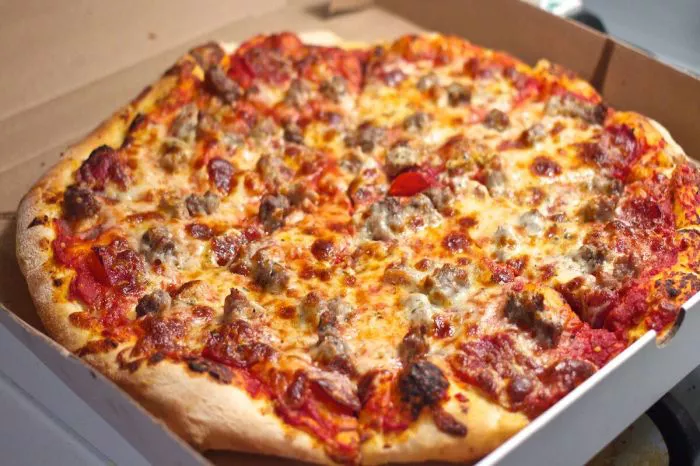In the realm of fast food, pizza and burgers stand out as two iconic comfort foods beloved by millions around the world. While both are undeniably delicious, they also come with their fair share of health concerns. In this examination, we’ll compare the nutritional profiles of pizza and burgers, explore their potential health impacts, and consider factors such as ingredients, portion sizes, and preparation methods to determine which may be better for your health.
Nutritional Comparison:
Let’s start by breaking down the nutritional components of pizza and burgers:
Pizza:
Typically includes a crust made from refined flour, which is high in carbohydrates but lacks fiber.
Toppings often include cheese, which is a significant source of saturated fat and sodium.
Additional toppings such as meats, vegetables, and sauces can add more calories, fat, and sodium.
Burger:
Features a bun made from refined flour, similar to pizza crust.
Contains a protein source such as beef, chicken, or plant-based alternatives.
Toppings may include cheese, lettuce, tomato, onions, pickles, and condiments like ketchup and mayonnaise, contributing to the overall nutritional profile.
While both pizza and burgers can be customized with a variety of toppings, the specific ingredients and portion sizes will ultimately determine their nutritional value.
Interview with Dr. Sarah, Registered Dietitian:
“When comparing pizza and burgers, it’s essential to consider factors like portion size, toppings, and preparation methods. While both can be high in calories, saturated fat, and sodium, making healthier choices such as opting for whole-grain crust or lean protein can help mitigate some of these concerns.”
Health Implications:
Now, let’s examine the potential health implications of consuming pizza and burgers:
Pizza:
High in refined carbohydrates, which can lead to spikes in blood sugar levels and contribute to weight gain if consumed in excess.
Cheese and meat toppings can be high in saturated fat and sodium, increasing the risk of heart disease and hypertension.
Vegetable toppings offer some nutritional benefits, but they may be overshadowed by the less healthy components of pizza.
Burger:
Beef burgers are high in saturated fat and cholesterol, which can raise LDL (bad) cholesterol levels and increase the risk of heart disease.
Processed meats like bacon and sausage may contain added preservatives and carcinogens, increasing the risk of certain cancers.
Plant-based burgers made from ingredients like beans or mushrooms offer a healthier alternative, but they may still be high in sodium and processed ingredients.
Interview with Dr. John, Cardiologist:
“Both pizza and burgers can be part of a balanced diet when consumed in moderation. However, it’s essential to be mindful of portion sizes and choose options with lean protein, whole grains, and plenty of vegetables. Incorporating these healthier choices can help mitigate some of the negative health effects associated with these foods.”
Portion Sizes and Preparation Methods:
In addition to ingredients, portion sizes and preparation methods play a significant role in the overall healthiness of pizza and burgers:
Pizza:
Opt for thin crust over deep dish, as thin crust tends to be lower in calories and carbohydrates.
Choose vegetable toppings like mushrooms, peppers, and onions instead of meat toppings to reduce saturated fat and calories.
Limit portion sizes and avoid overindulging in cheese-heavy or meat-laden pizzas.
Burger:
Opt for lean protein options like grilled chicken or turkey burgers instead of beef patties to reduce saturated fat and cholesterol.
Choose whole grain or multigrain buns instead of white bread buns for added fiber and nutrients.
Load up on vegetable toppings like lettuce, tomato, and onions to add fiber and vitamins to your burger.
Interview with Chef Alessandro, Owner of a Gourmet Burger Restaurant:
“At our restaurant, we prioritize using high-quality, fresh ingredients and offer a variety of healthier burger options for our customers. From lean protein choices to whole grain buns and plenty of vegetable toppings, we aim to provide a balanced and satisfying dining experience.”
Conclusion:
In conclusion, both pizza and burgers can be enjoyed as part of a balanced diet when consumed in moderation and with attention to healthier ingredient choices, portion sizes, and preparation methods. While both foods have their nutritional pitfalls, making conscious decisions about toppings, crusts, and protein sources can help mitigate some of the health concerns associated with these popular fast foods. Ultimately, whether pizza or burgers are “better” for your health depends on individual preferences, dietary needs, and overall lifestyle choices.

